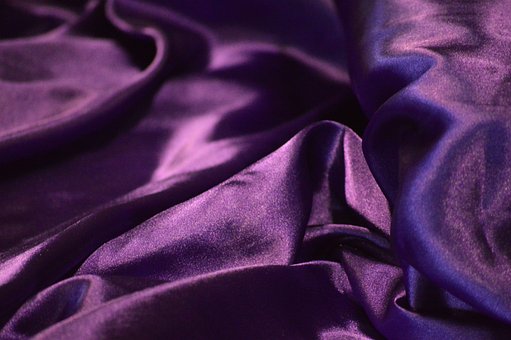 Silk, just the word has a luxurious sound associated with it. It's a fabric marketed to all as something you want, you desire, that will take your life a step above ordinary. This from a fabric that's been around since 2300 B.C.
Silk, just the word has a luxurious sound associated with it. It's a fabric marketed to all as something you want, you desire, that will take your life a step above ordinary. This from a fabric that's been around since 2300 B.C.Silk is said to have been introduced by the wife of the mythical Yellow Emperor around 3000 B.C. There is archeological support for this claim. In 1927, half of a silk cocoon was unearthed by the Yellow River in Northern China, dating between 2600 and 2300 B.C. Furthermore, some silk threads and fabric have been found dating back to about 3000 B.C.
At first, silk could only be worn by the Emperor, his closet family, and the highest of those in government. Inside his place, it is believed the Emperor and his family wore white silk but outside in public they wore yellow, considered the color of the earth. Over time, the wearing of silk spread to other classes.
In fact, silk became so popular that it was used in musical instruments, fishing lines, rag paper, bow strings, etc in addition to clothing. Eventually, even the common person could afford to wear silk. By 200 B.C, silk became more than just clothing or used industrially, it took on the character of money. Farmers could pay taxes in either grain, silk, or both as well as the wealthier paying their servants in silk. Before long, it was used as currency for foreign trade and this caused the rest of teh world to learn about it.
Silk cultivation arrived in India about 500 years later and from there, two monks brought a handful of silk worms to Byzantium Empire to be used to create it's own silk industry. The Byzantium Empire kept the mechanics of producing silk to themselves and undercut the price of regular Chinese silk but couldn't compete with the high quality silks.
The use of silk continued spreading across the known globe, to the Mediterranean Sea where silk production settled in Andalusia, making it the center for European produced silk in 1000 AD but it continued spreading until Italy took over as the production center in the 13th Century and France gained an edge in the 17th Century. All though this spread, only royalty bought and used silk due to its cost. It was too expensive for everyday people to wear.
During the 19th century when industrialization took off, the popularity of European silk fell and the cheaper Japanese silk took over due to the opening of the Suez canal. Furthermore, the production of the synthetic materials such as nylon began replacing silk in stockings and parachutes. In addition, World War I and II disrupted the production of silk both in Japan and Europe due to the necessity of it for war use.
At the end of World War II, Japan's silk production began and Japan became the largest producer and essentially the only exporter of raw silk until the 1970's when China took over and they now produce about two thirds of the world's production. The United States has the record as the largest importer of silk in the world.
I love silk and have quite a bit of it. Let me know what you think, I'd love to hear. In another week or so, I'll talk about the different types of silk fabric because its not all the same. Have a great day.
No comments:
Post a Comment